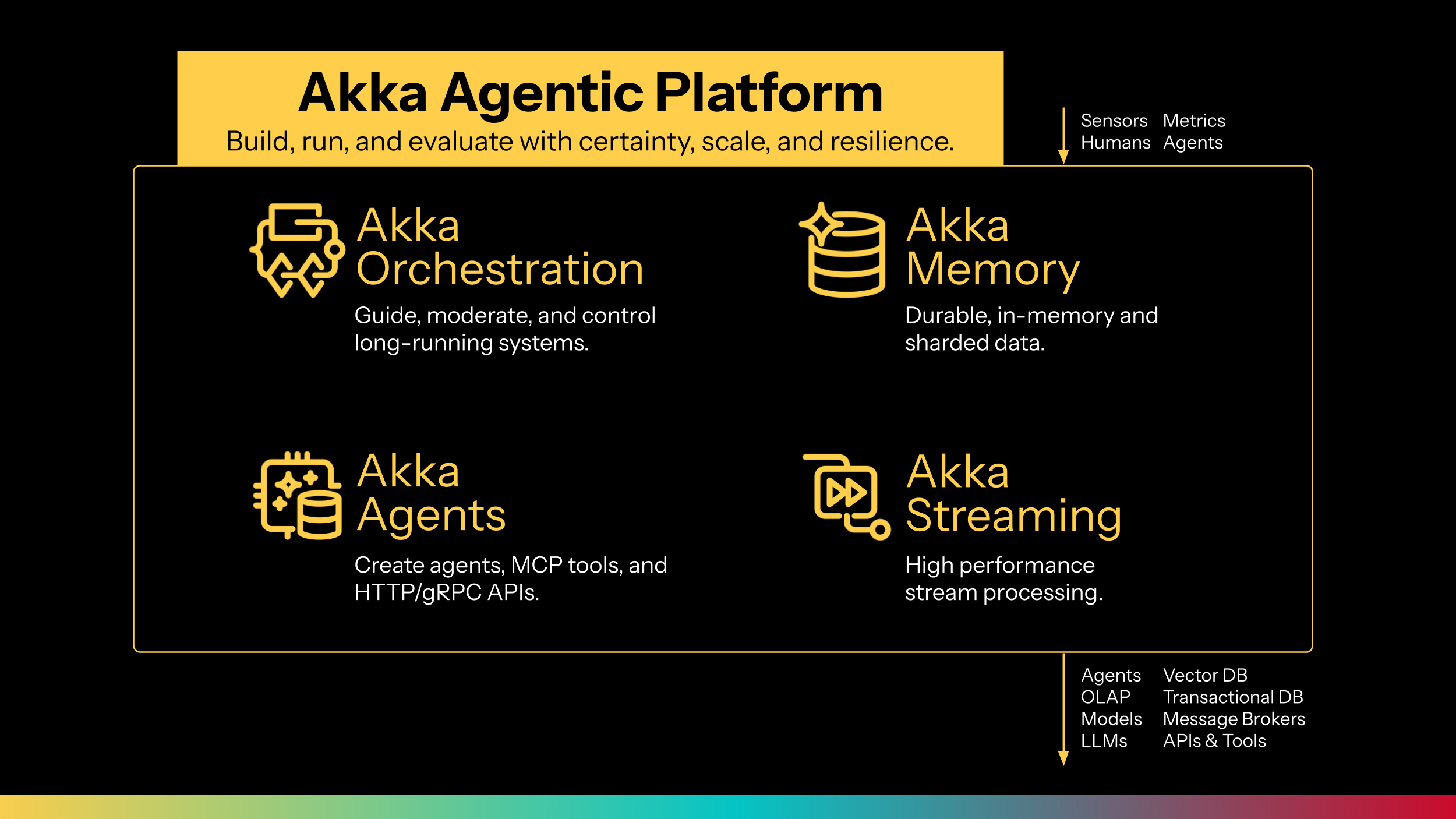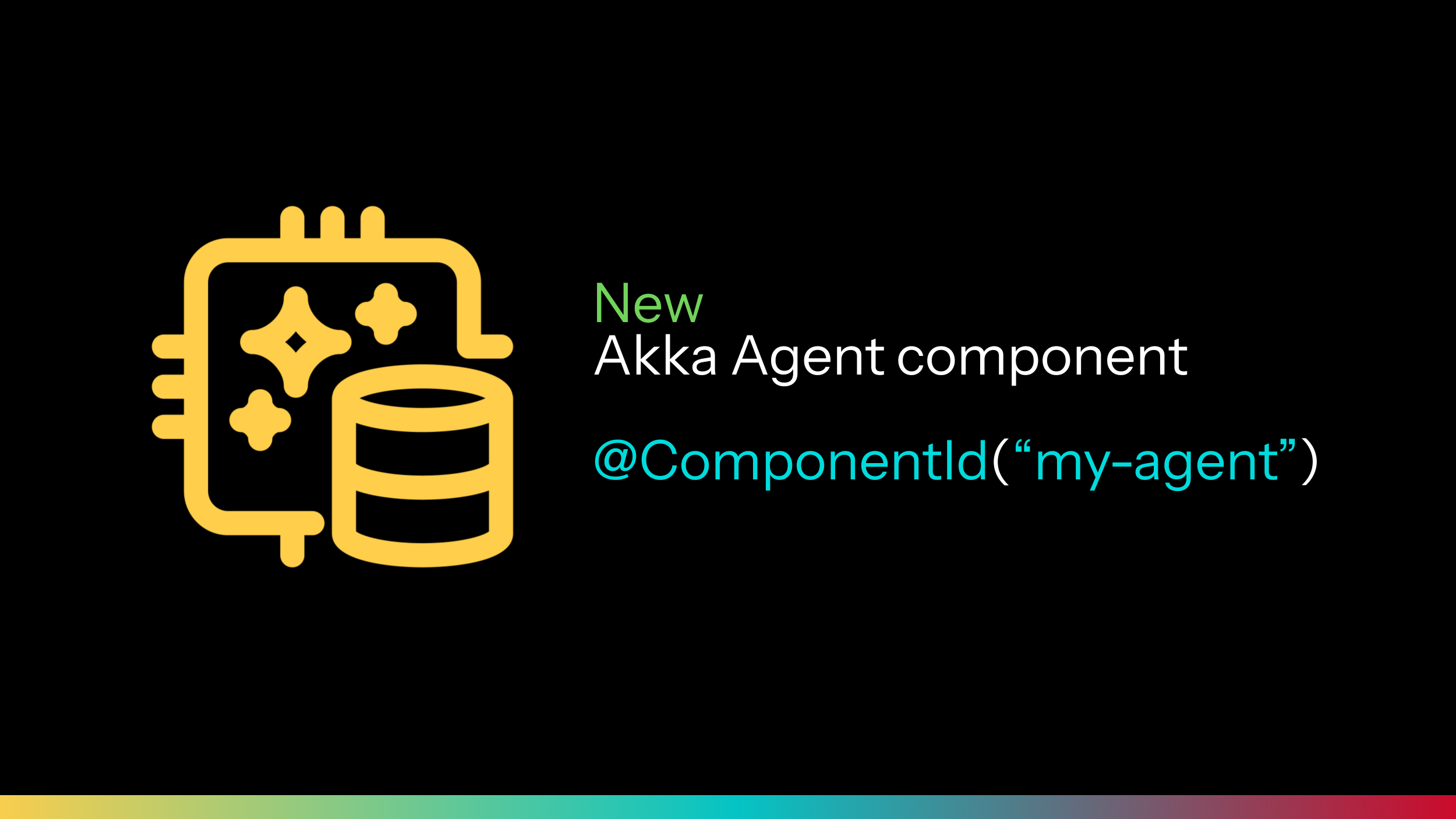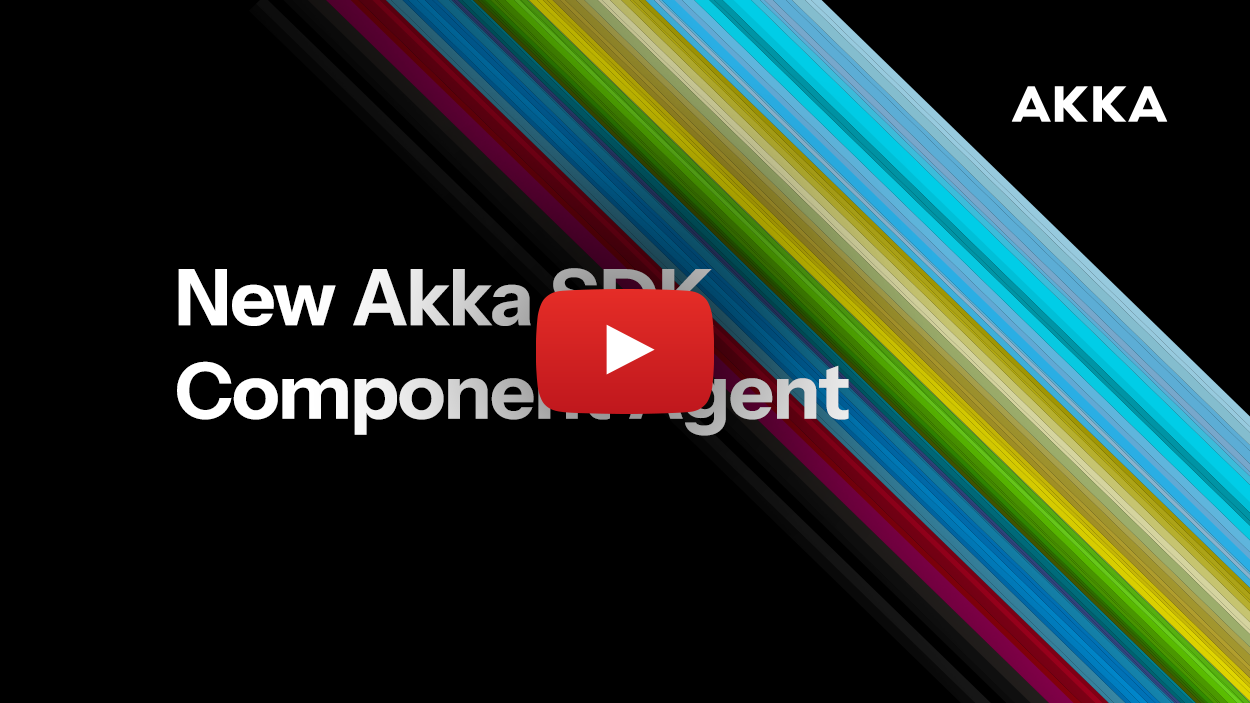Blog
All the latest info and insights from the Akka team
Featured

Announcing the Akka Agentic Platform
Introducing Akka Orchestration, Akka Agents, Akka Memory, and Akka Streaming; integrated offerings that deliver 3x the velocity, 1/3rd the compute and any SLA for every agentic system.

Introducing Akka’s new Agent component
A part of Akka Agents, the Akka SDK introduces an Agent component for creating goal-directed agents that have their own memory and interoperate with other agents, tools, and semantic stores.

Video: New Akka SDK Component: Agent
In this video, Akka engineer Eduardo Pinto introduces the Akka Agent, a core component within the Akka SDK. Designed to interact with AI models.
All Blogs

Tyler Jewell

Tyler Jewell

Tyler Jewell

Eduardo Pinto

Andrzej Ludwikowski

Johan Andrén

Duncan Devore

Tyler Jewell

Duncan Devore

Jonas Bonér

Tyler Jewell

Team Akka

Duncan Devore

Tyler Jewell

Tyler Jewell

Kevin Hoffman

Tyler Jewell

Kevin Hoffman

Tyler Jewell

Tyler Jewell

Andrzej Ludwikowski

Andrzej Ludwikowski

Andrzej Ludwikowski

Andrzej Ludwikowski

Andrzej Ludwikowski

Andrzej Ludwikowski

Team Akka

Team Akka

Jonas Bonér

Tyler Jewell

Tyler Jewell

Andrzej Ludwikowski

Michael Nash

Jonas Bonér

Eduardo Pinto

Patrik Nordwall

Team Akka

Tyler Jewell

Christopher Hunt

Jonas Bonér

Jonas Bonér

Peter Vlugter

Patrik Nordwall

Patrik Nordwall

Johan Andrén

Jonas Bonér

Jonas Bonér

Janik Dotzel

Patrik Nordwall

Johan Andrén

Jonas Bonér

Patrik Nordwall

Michael Nash

Patrik Nordwall

Jonas Bonér

Jonas Bonér








